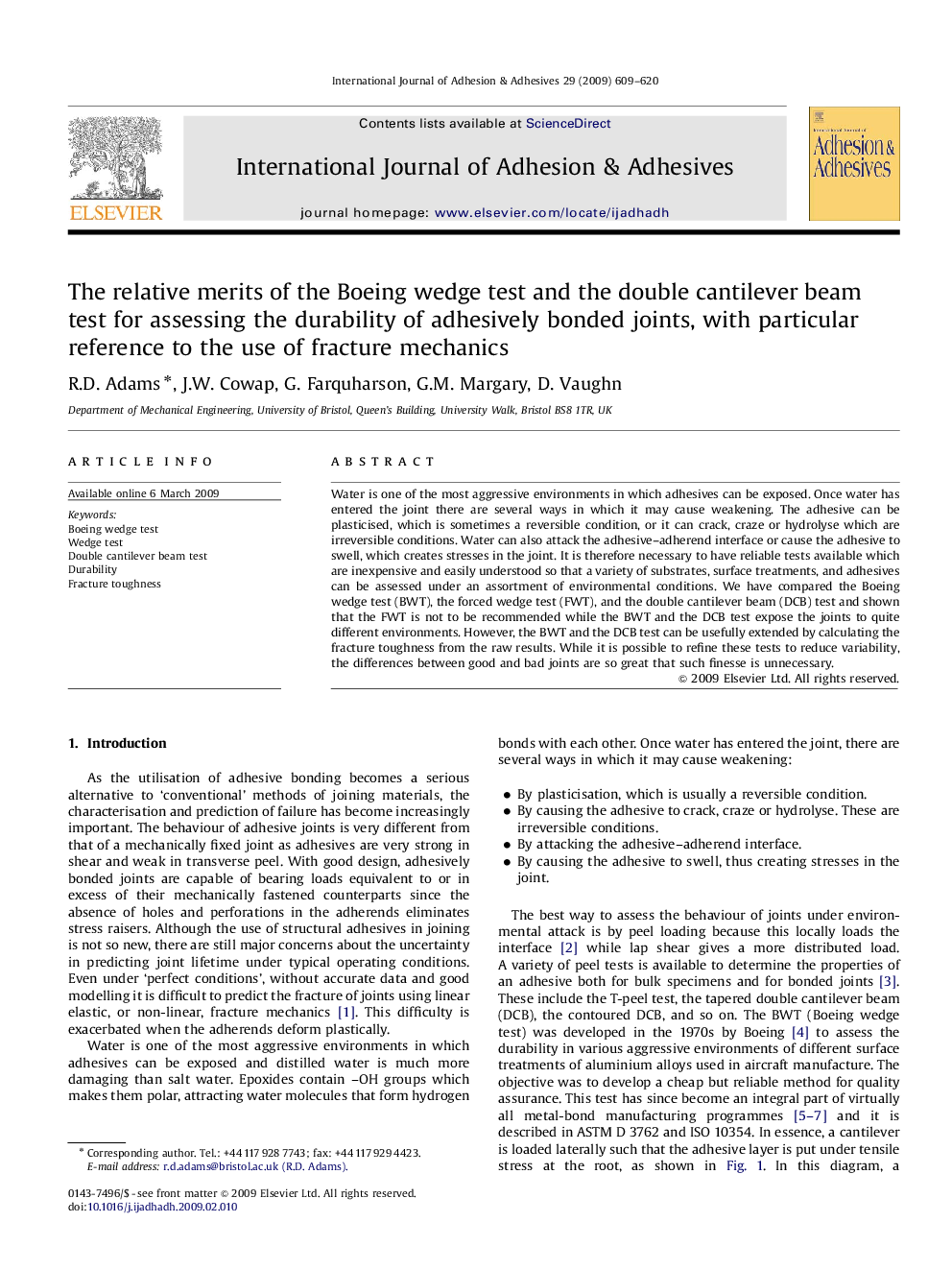| کد مقاله | کد نشریه | سال انتشار | مقاله انگلیسی | نسخه تمام متن |
|---|---|---|---|---|
| 777346 | 1463524 | 2009 | 12 صفحه PDF | دانلود رایگان |

Water is one of the most aggressive environments in which adhesives can be exposed. Once water has entered the joint there are several ways in which it may cause weakening. The adhesive can be plasticised, which is sometimes a reversible condition, or it can crack, craze or hydrolyse which are irreversible conditions. Water can also attack the adhesive–adherend interface or cause the adhesive to swell, which creates stresses in the joint. It is therefore necessary to have reliable tests available which are inexpensive and easily understood so that a variety of substrates, surface treatments, and adhesives can be assessed under an assortment of environmental conditions. We have compared the Boeing wedge test (BWT), the forced wedge test (FWT), and the double cantilever beam (DCB) test and shown that the FWT is not to be recommended while the BWT and the DCB test expose the joints to quite different environments. However, the BWT and the DCB test can be usefully extended by calculating the fracture toughness from the raw results. While it is possible to refine these tests to reduce variability, the differences between good and bad joints are so great that such finesse is unnecessary.
Journal: International Journal of Adhesion and Adhesives - Volume 29, Issue 6, September 2009, Pages 609–620